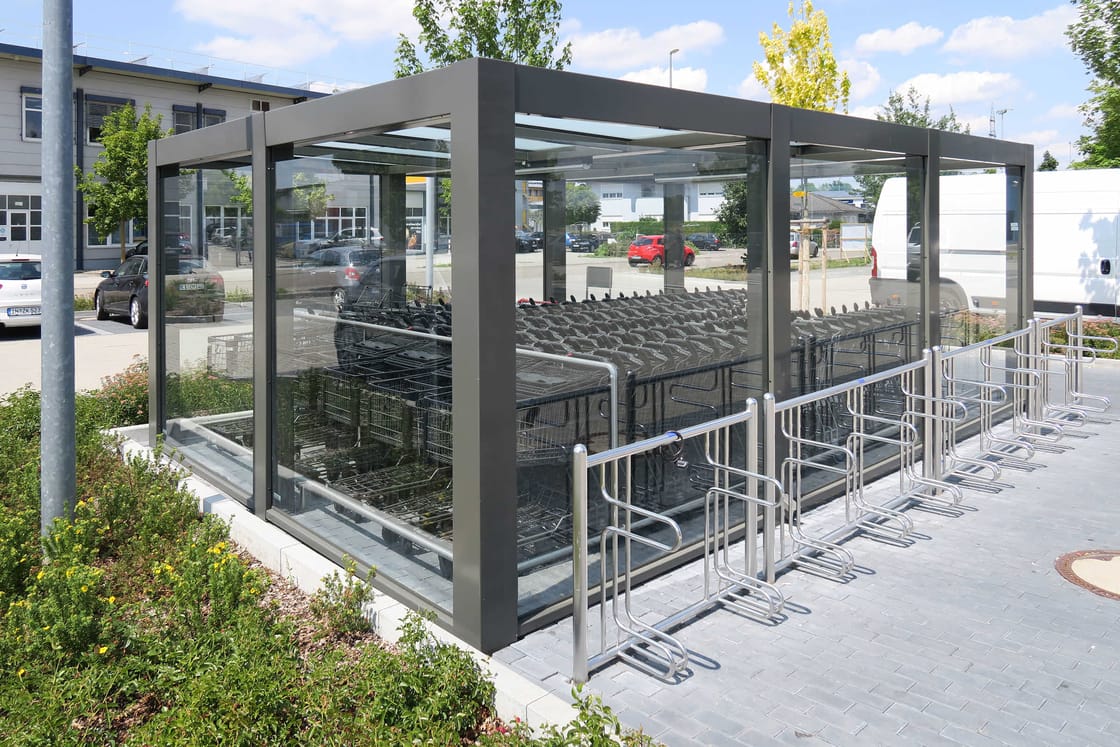Outside like inside
There is no second chance for the first impression. That may be true in many situations, and that’s probably why anyone who also makes the outdoor area of their store attractive is well advised to do so. Parking areas and entrance areas are, after all, the first physical “point of contact” with which the “customer journey” begins. So much for the marketing jargon. In practice, it’s about giving visitors and (potential) customers a coherent impression and winning them over again and again with clearly positive messages and comfort.
New retail concepts respond to changing customer needs. The interiors are increasingly dominated by a high quality feel, and in front of and around the sales areas, things have also changed: parking areas are more spacious, clearly structured and adequately illuminated. Shopping carts find a central parking place, which is often also covered to protect people and material from rain and snow. At the same time, this prevents too many shopping carts from clogging up parking spaces and traffic routes – a considerable gain in convenience that stressed drivers in particular will appreciate. Litter garbage cans and ashtrays also ensure orderly and clean conditions.
Mobility of the population is changing
Bicycles, e-bikes and pedelecs are becoming increasingly popular, discounters also offer safe and convenient parking facilities for these means of transport, which can also be covered. Who likes to lock and unlock their bike in the pouring rain? Bike-riding parents with small children who need to be safely placed in their child’s seat are also grateful for a canopy.
In some places, even solar-powered charging stations for e-bikes and e-filling stations for electric cars have already made inroads, which are a good way to underscore an environmentally conscious image. The following applies to all outdoor installations: High-quality materials such as stainless steel, safety glass, wood and aluminum leave a good impression, even after years of use in wind and weather. Thanks to a wide range of design options, they can be adapted to existing corporate identity concepts.
Appealing architecture
Purely functional buildings, which are more reminiscent of converted warehouses in which only temporary “fast-moving” food and non-food items are offered, are to be gradually replaced by modern and appealing architecture. Accentuated entrance portals invite visitors to enter and glass facades, which admittedly should not be plastered with advertising posters, convey transparency and bring stimulating daylight into the interior spaces.
Sure, every measure means investments and they have to pay off. But since first impressions often determine sympathy or rejection, and the competition is also constantly looking for ways to differentiate and position itself, the appealing architecture and design of the outdoor area offers new opportunities.
